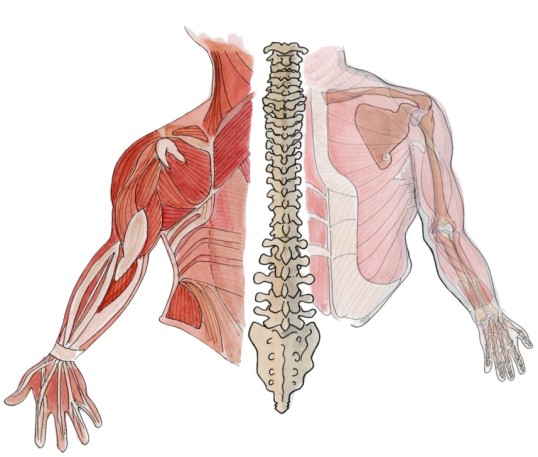The musculoskeletal system

Source: © Michael Hüter, Bochum
Humans have over 650 muscles, over 200 bones and over 100 joints. Both the overloading and insufficient loading thereof can have a negative effect on the interaction between muscles, bones and joints. About 22,6% of the days when employees are unfit for work are attributable to musculoskeletal diseases (MSE, 2020), and this figure rises as employee age increases – climbing to over 35% in the over-55s age group. Musculoskeletal diseases are therefore to be seen as the cause of significant macroeconomic damage (estimated loss due to loss of production: annually approx. 19.6 billion euros, 2020).
Reducing musculoskeletal disorders is also one of the three fields of action in the third period of the Joint German OSH Strategy (GDA). Musculoskeletal loads at workplaces are manifold and include the workload types:
- Manual handling of loads (e.g. lifting, holding, carrying, pulling, pushing loads)
- Repetitive manual work
- Awkward postures (forced postures, e.g. standing permanently without any effective means of movement, sitting permanently in a fixed position, working above shoulder or head level, squating/kneeling/lying)
- Working with high whole-body forces/workloads due to body movement (e.g. when working on large workpieces, operating machines, climbing/climbing, positioning work objects, working with levers, ratchets or adjusting wheels on slides)
- Local mechanical pressure effects (e.g. through permanent support via the wrist or elbows)
- Actions of hand-arm vibrations (HAV)
- Exposure to whole-body vibrations (GKV)
- Low physical activity tasks
In addition to these types of strain it is also possible for mental strain to cause or amplify musculoskeletal complaints. The objectives set out in the GDA therefore define a decrease in impairing mental stress as important to the achievement of a reduction in the number of cases of musculoskeletal disease.
Working in cooperation with the German social accident institutions, the German Social Accident Insurance (DGUV) has long been active in the prevention of occupational musculoskeletal diseases in practical scenarios, and offers a range of related services including:
- Provision of practical guides and informative material for companies and employees;
- Planning and organization of campaigns/public relations activities;
- Provision of consulting services to companies in the field of ergonomic work design (relationship-based and behavioural prevention);
- Delivery of seminars and training courses;
- Integration of mental strains into risk assessment;
- Design of occupational medical prophylaxis;
- Development of ergonomic methods and procedures for the measurement and assessment of occupational strains on the musculoskeletal system;
- Realization of laboratory-based and practical research projects focusing on ergonomics and occupational psychological aspects in a variety of workplaces;
- Drawing up of and guidance on ergonomic design solutions for ageing workforces;
- Ergonomic design of man-machine interfaces;
- Measurements using the CUELA system for the purpose of risk assessment in typical occupational strain scenarios;
- Database design and development.